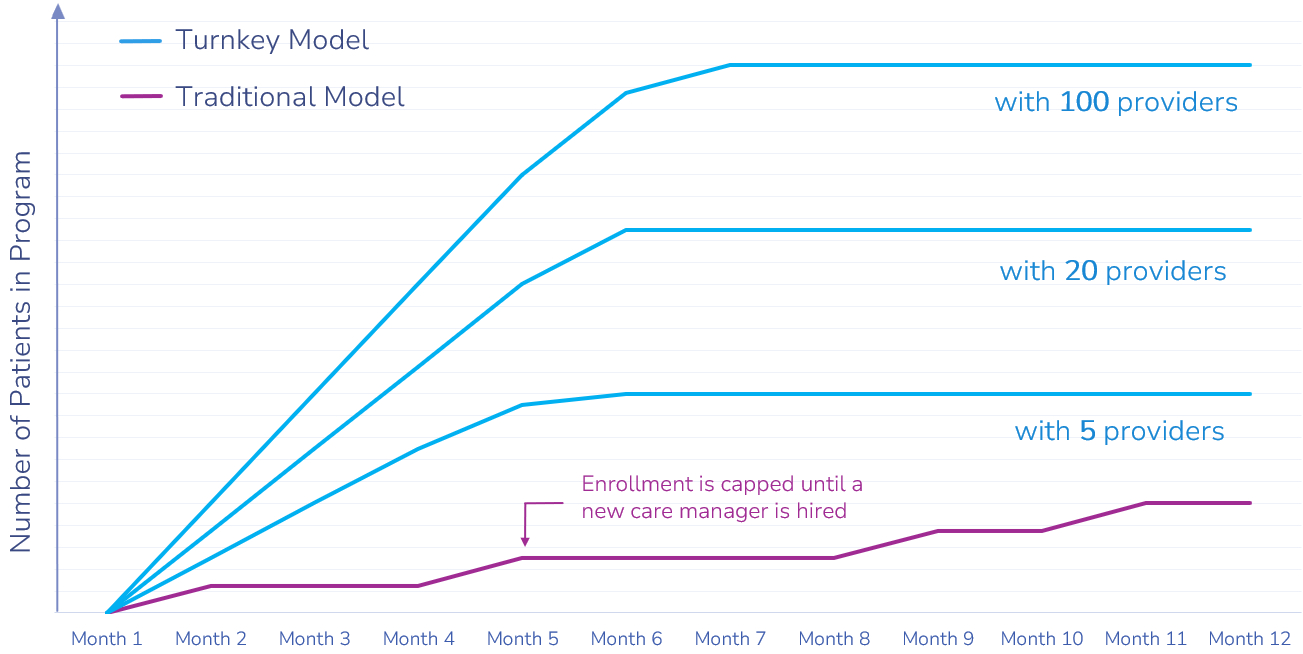Healthcare organizations looking for new ways to drive value-based care outcomes are increasingly using fee-for-service programs to fund the transition. What could that look like for your organization? Answer a couple of questions and we can show you.
This quick quiz will help you understand the impact proactive care can have on your patients and your practice. We’ll identify the best Medicare FFS model for you and give you the benchmarks you need to set up and scale an effective program at your organization.
Do you know how many Traditional Medicare and Medicare Advantage patients you have?
No worries! We'll calculate your results based on your number of physicians and APPs instead.
It may take a moment for your numbers to load.
Oops! You haven't finished filling out the form! Please scroll back up and make sure you selected an answer for every question.
APCM is designed to help practices deliver better between-visit care to all their Medicare patients. By removing time- and condition-based requirements, APCM makes it easier for you to focus on delivering the care patients need at the right time for them. Learn more about APCM and why it’s a good fit for primary care practices.
CCM rewards practices for providing better between-visit care to Medicare patients with 2+ chronic conditions. Specialty providers use CCM to improve outcomes, increase medication compliance, support better self-management, and lower the total cost of care. Learn more about CCM and why it’s a good fit for specialty practices.
A CCM program at your organization could look like...
With text-based care management, your organization can scale high-quality, consistent care to all of your eligible patients, all year round.
Delivering consistent care across your patient population accelerates early intervention, closes care gaps, and reduces unnecessary ED visits.
Delivering consistent care across your patient population accelerates early intervention, closes care gaps, and reduces unnecessary ED visits.
Care management is self-sustaining — capture more revenue for the between-visit work your employees are already doing.
The more your patients engage, the more value they see from the program and the more billable events they generate. An engaged patient population is the key to building a self-sustaining, profitable program that enables you to reinvest in new initiatives.
What does good patient engagement look like? These are our benchmarks from similar organizations we work with.
APCM was designed to help you support your entire patient population, but scaling care to that level isn’t easy. Here’s what it takes to remain consistent at scale.
68% of Medicare beneficiaries qualify for CCM, but extending your program to the majority of your patient population isn’t easy. Here’s what it takes to remain consistent at scale.

Traditional proactive care methods are slow and labor-intensive, resulting in limited programs with high overheads. Using AI-powered technology and turnkey staffing, organizations can enroll more patients, faster, while delivering the same consistent, high-quality care.
To drive meaningful impact, you need to extend proactive care to as many patients as possible. Here are some of the capabilities you’ll need to grow your program successfully.
We’ve helped 150+ healthcare groups overcome challenges and launch successful proactive care programs using our AI-enabled platform.
Whether you’re thinking of running proactive care in-house or you want to outsource using a full turnkey solution, our expert advisors can offer advice and guidance on how to evaluate the right program model for your organization and help you drive success at scale.
Meet with one of our expert advisors and we’ll provide a free financial model customized for your organization.
You’ll also get…